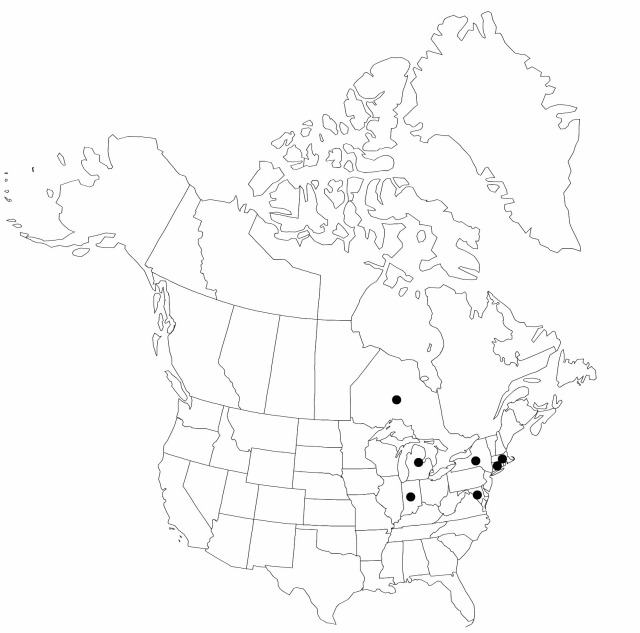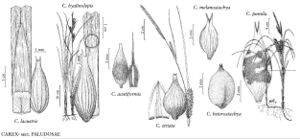Carex acutiformis
Bietr. Naturk. 4: 43. 1789.
Plants colonial; rhizomes long-creeping. Culms central, coarse, trigonous, 55–130 cm, scabrous-angled. Leaves: basal sheaths pale green to brownish or red tinged; ligules 5–14 mm; blades glaucous, M-shaped, (4.5–) 5.5–12 (–20) mm wide, glabrous. Inflorescences 15–35 cm; proximal 2–5 spikes pistillate, ascending; distal spikes erect; terminal 1–2 (–3) spikes staminate. Pistillate scales lanceolate, acute to acuminate, glabrous, at least the proximal with scabrous awn to 3.5 mm. Perigynia ascending, ± glaucous, often strongly red dotted, ± strongly 12–18-veined, thin-walled, narrowly ovoid, flattened-trigonous, 3–4.5 × 1.4–2.1 mm, glabrous; beak 0.3–0.6 mm, emarginate to weakly bidentulate, teeth to 0.2 mm. 2n = 78.
Phenology: Fruiting Jun–Aug.
Habitat: Open swamps, wet, open thickets, marsh edges, sedge meadows, lakeshores
Elevation: 0–300 m
Distribution

Introduced; Ont., Conn., Ind., Mass., Md., Mich., N.Y., Eurasia, Africa
Discussion
An uncommon and local introduction, Carex acutiformis forms large, glaucous clones where it is established but is, as yet, not spreading aggressivly into adjacent habitats. It superficially resembles C. aquatilis, but is larger, has 3 stigmas, and has strongly veined perigynia 3–4.5 mm.
Selected References
None.
Lower Taxa
"lengthofbody" is not declared as a valid unit of measurement for this property."shortened" is not a number.
